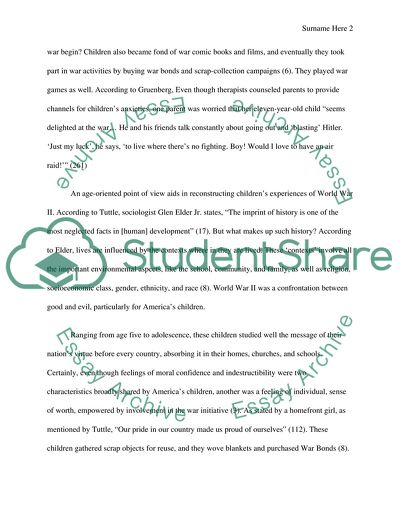Cite this document
(American Childrens Life during the Second World War Essay Example | Topics and Well Written Essays - 1250 words, n.d.)
American Childrens Life during the Second World War Essay Example | Topics and Well Written Essays - 1250 words. https://studentshare.org/sociology/1762124-america-childrens-life-in-world-war-ii
American Childrens Life during the Second World War Essay Example | Topics and Well Written Essays - 1250 words. https://studentshare.org/sociology/1762124-america-childrens-life-in-world-war-ii
(American Childrens Life During the Second World War Essay Example | Topics and Well Written Essays - 1250 Words)
American Childrens Life During the Second World War Essay Example | Topics and Well Written Essays - 1250 Words. https://studentshare.org/sociology/1762124-america-childrens-life-in-world-war-ii.
American Childrens Life During the Second World War Essay Example | Topics and Well Written Essays - 1250 Words. https://studentshare.org/sociology/1762124-america-childrens-life-in-world-war-ii.
“American Childrens Life During the Second World War Essay Example | Topics and Well Written Essays - 1250 Words”. https://studentshare.org/sociology/1762124-america-childrens-life-in-world-war-ii.


